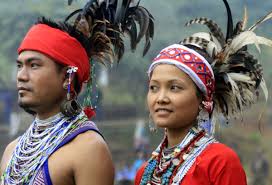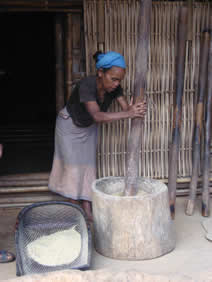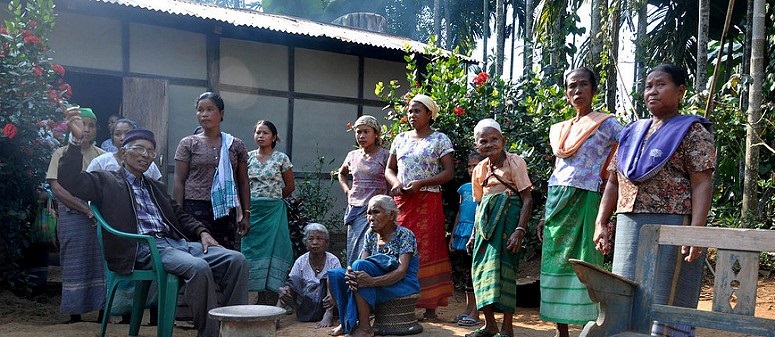
Property and Inheritance
Garo society is matrilineal, and inheritance is through the mother. All children, as soon as they are born, belong to their mother's ma.chong, where Dalton's Motherhood.
Before we deal at length with this point, we need to know that the Garo tribe is divided into five exogamous divisions called Chatchis (sometimes rendered as Katchis). Two of these are relatively unimportant in that they include an insubstantial part of the population. The important ones are the Chatchis named Marak, Momin and Sangma. Of these again, the Marak and the Sangma Chatchis have a wider membership: it has been estimated that more than half of all the Garos belong to one or the other. The earlier practice of Chatchi exogamy is to large extent still strictly observed. The majority of Garos still hold that a member of a particular chatchi should not marry a member of the same chatchi. For example, most Sangmas would shrink from marrying other Sangmas. The practice may be crumbling to some extent in urban society. Marriage being tantamount to incest. This, to a Garo, is a serious breach of moral laws which will draw upon the guilty persons divine punishment, like being killed by wild animals or struck by lightning. These ma.chongs are very numerous. For the present purpose, a few may be named as examples under each Chatchis e.g.,
Sangma: Agitok, Am.phang, Koksi, Manda, Rongmutu, Rongrokgre, Snal, etc.Marak : Chada, Chambugong, Kama, Koknal, Raksam, Rangsa, Rechil, Re.ma, etc.
Momin : Cheran, Gabil, Ga.rey, Megonggare, Mrenda, Wa.tre, etc
Although a modernized Manda Sangma may not shrink from marrying an Agitok Sangma, he will not think marrying another Manda Sangma. The several Chatchis are subdivided into a large number of ma.chongs may not be so numerous as the Khasi clans or kurs (see Khasi Hills Gazetteer, Ch, III). The practice of kur exogamy is more rigidly observed by the Khasi people.
In the matrilineal society of the Garos, property passes from mother to daughter. Although the sons belong to the mother's ma.chong, they cannot inherit any portion of the maternal property. Indeed, males cannot in theory hold any property other than acquired through their own exertions. Even this will pass on to their children through their children's mother after they marry. It would appear that the Garos are less rigid then the similarly matrilineal Khasis in their system of inheritance. Whereas among the Khasis the youngest daughter is the principal heiress and the older daughters, if any, may or may not be given any share of the maternal property, among the Garos any of the daughters, even the eldest, if there are many, may be chosen as the nokna or heiress, having provided her fitness to occupy this privileged position by her dutifulness to her parents. In case there are no daughters, the family can adopt any girl, usually one having the closest blood relationship to the adoptive mother, first preference being given to one of the non-heir daughters (agate) of the woman's sisters, who are, of course, among the closest female relations a woman can have.
Inheritance of property among the Garos is generally linked with matrimonial relations, and although men may have no property to pass on, they have an important say in deciding to whom it should pass. If the nokna is unmarried, as she often is since selection generally takes place before she gets married, the father will try to get a young man from his own lineage, commonly the son of his own sister, as the husband of the heiress. Such cross-cousin marriages are common. The nephew thus becomes in a sense the co-heir (a.kim) with his prospective bride, and the father's machong retains the right of control over his wife's property. Of course, he cannot sell it or dispose of it, but he has every right to make full use of it. Paradoxically, this apparent elasticity of the Garo System of inheritance, vis-a-vis that of the Khasi, seems to contribute to greater stability in their society.







